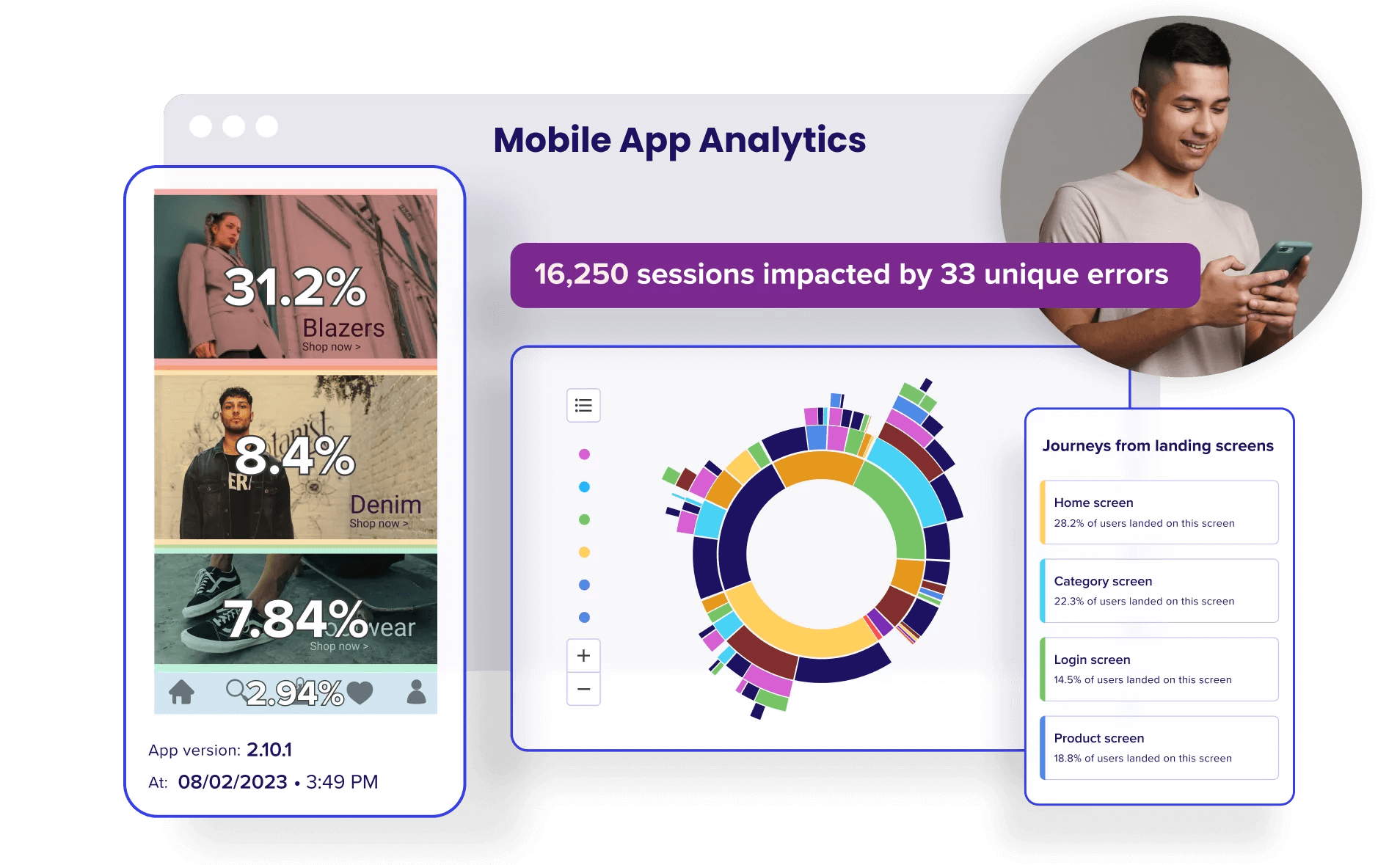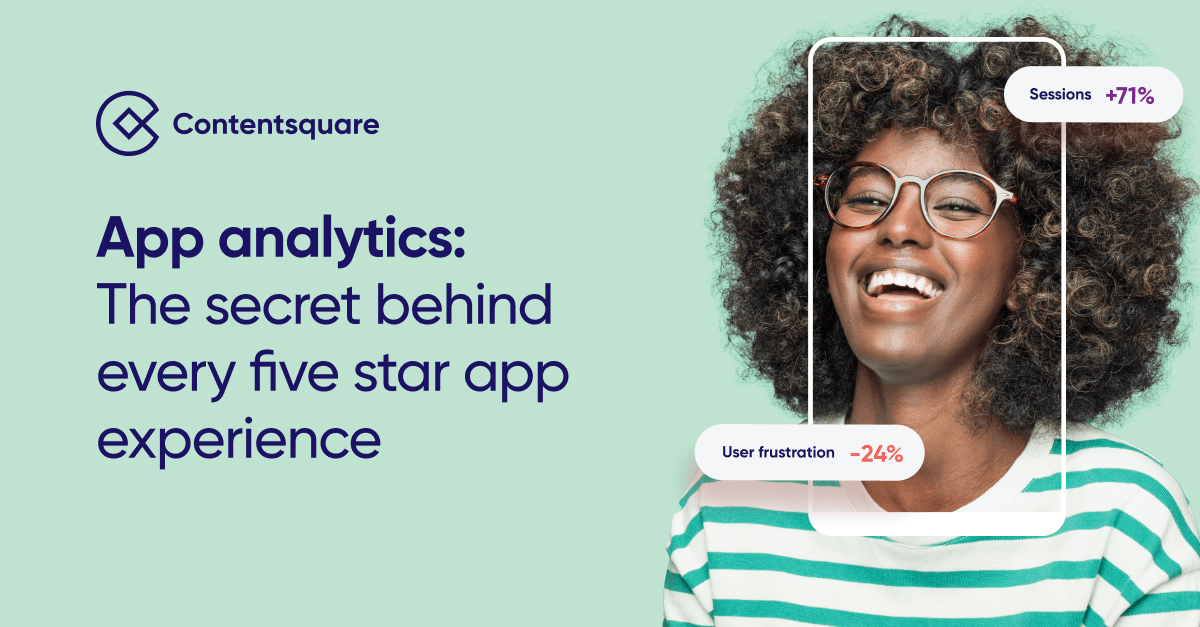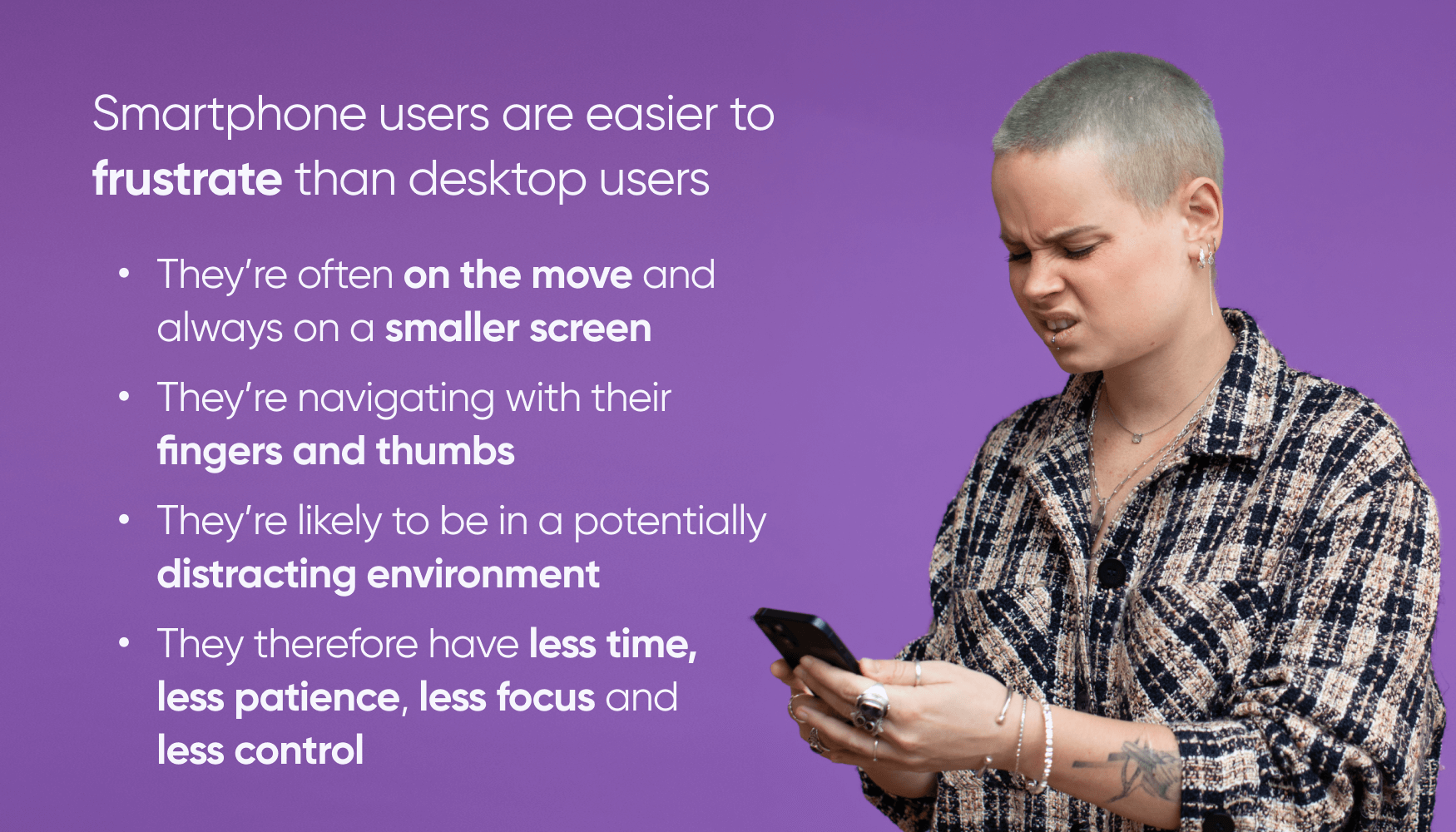
Elevate your app, giving users a five-star experience and driving growth for your business.

There are millions of apps out there, and to stand a chance at engaging, retaining and delighting users enough to make your app a non-expendable one, you need to know how people are using it— and how they’re feeling about it.
Without understanding what makes their app users tap (and tap out), app teams are flying blind, possibly straight into a solid cliff face of one-star reviews and mass uninstalls.
To ensure your app avoids that unfortunate (and all-too-common) fate, here’s what you need to know:
We’ll answer all those questions (and more) in this article, the first in a five-part series explaining how you can use our app analytics platform, CS Apps, to optimize at every stage of the app user journey, from onboarding to conversion and retention.
It’s going to be app-solutely tremendous. (Look: We’ll try to keep those puns to a minimum, but we’re not promising anything.)
So, let’s dive in with a quick introduction to the fascinating world of app analytics…
App analytics platforms gather, analyze and report on data from mobile apps.
They track this data using software development kits (SDKs)—collections of tools, including guides, code samples, programs, libraries and APIs, which developers need to build and operate apps—and identify users by their device or operating system ID.
There are (broadly speaking) two categories of app analytics that gather different data types.
While app performance analytics is essential to providing a satisfactory app experience, behavioral app analytics is where an app experience can be elevated from satisfactory to stand-out.
By understanding what users love, like, dislike, hate or feel ‘meh’ about in the app experience, you can make data-driven decisions to increase user engagement, retention and (if applicable) conversion, optimizing what works and discarding what doesn’t.
What’s more, by segmenting your user base, you can more accurately personalize your app experience and deliver truly customer-focused marketing and re-engagement.
When combined with app performance analytics (which ensures everything is running smoothly from a technical perspective), behavioral app analytics enables you to deliver the most engaging, least frustrating experience possible—an experience that will drive more revenue for your business.
According to data.ai, the app economy is currently worth approximately $500B and is growing fast, with H1 2023 seeing a record $67.5B in consumer spend and 76.8 billion app downloads globally.
It certainly seems like the only way is app for this market (hey, we did say we can’t make any promises)—which is potentially great news for businesses.
That’s because app users are your most valuable customers.
This is self-evident if your business is entirely built around an app, but it’s also true for businesses that serve customers via a website.
Think about it: To visit and use your website, customers just have to find it and click a link.
But with app users, things are different. Before they can even start using your app, your users will have had to download it (taking up precious memory and home screen space) and will probably expect to have to log on and onboard.
All this requires effort and time, and indicates—to a much greater extent than visiting your website—a commitment to engaging with, and potentially spending money with, your brand.
Anybody who downloads your app is, if only tentatively, bought in.
Unless you somehow mess things up, your app users will be walking around with a direct line to your business in their pockets. You’ll be able to communicate with them, market to them and sell products and services to them without them having to log in more than once.
No wonder, then, that according to a study by Google and Kantar, 87% of retailers say app users have a higher lifetime value than nonusers.
But with all these rewards in mind, what’s stopping every brand from launching a highly successful app? Glad you asked…
According to Statista, there were over 3.55 million apps available on Google Play Store in Q3 2022 and 1.64 million available in the Apple App Store (which conducts more regular purges of apps that fail to meet their stringent and ever-changing standards).
However, only a tiny percentage of these millions of apps actually succeed.
Statista reports that in Q3 2022 the average retention rate for Google Play Store apps after 30 days was a mere 2.6%. The retention rate for Apple App Store apps: 4.3%—better, but hardly spectacular.
Make no mistake: Engaging and retaining app users can be extremely tough.
This is partly due to the challenges that come with engaging (and not frustrating) highly distractible smartphone users, most of whom already have far too many apps on their smartphones.
Lesley Wasserman (Product Marketing Manager for CS Apps) covered these challenges extensively in her fantastic blog on CS Apps. (Check out a few below.)

But it’s also about the standard set by app store titans like TikTok, Instagram and Spotify, which have led consumers to expect fast, fun, seamless, secure and reliable experiences.
And without app analytics to let you know how engaged (or enraged) your users are when using your app (and what exactly about your app experience is engaging/enraging them), it’s practically impossible to provide the near-perfect experience app users demand.
Hopefully by now we’ve convinced you (if you needed it) that app analytics is a must-have for any business with an app. But what features are must-haves for an app analytics platform?
While any app analytics platform is better than nothing, nothing is better for your mobile app user experience than an app analytics platform that:
A great app analytics platform will (of course) report on high-level metrics like churn rate, retention rate, conversion rate and active/monthly/weekly active users.
But it will also let your team get more granular, tracking macro and micro behavioral metrics like session depth, session length, time spent on individual screens and average screens viewed per visit.
And, crucially, it will let you see exactly where users are (and aren’t) scrolling, tapping and swiping on every screen throughout your app experience.
Armed with an app analytics platform that does all of this, you’ll be able to:
But what app analytics platforms offer all of the above capabilities?
We’re a little biased, of course—but truthfully, we only know of one.
CS Apps is our comprehensive app analytics solution. Using CS Apps, your business can easily understand the experiences of your app’s users and the impact on that experience (and on your business’ KPIs) of your app-design decisions.
Over the course of this series of articles, we’re going to explain how app analytics (and specifically CS Apps) helps you:
So, if you’re interested in upgrading your app experience in the near future, bookmark our blog and watch this space. (In the meantime, you should check out our how-to guide to optimizing mobile experiences.)
Or, if you feel ready, arrange a demo of CS Apps with one of our experts, who’ll show you how impactful Contentsquare-powered app analysis can be.
Elevate your app, giving users a five-star experience and driving growth for your business.